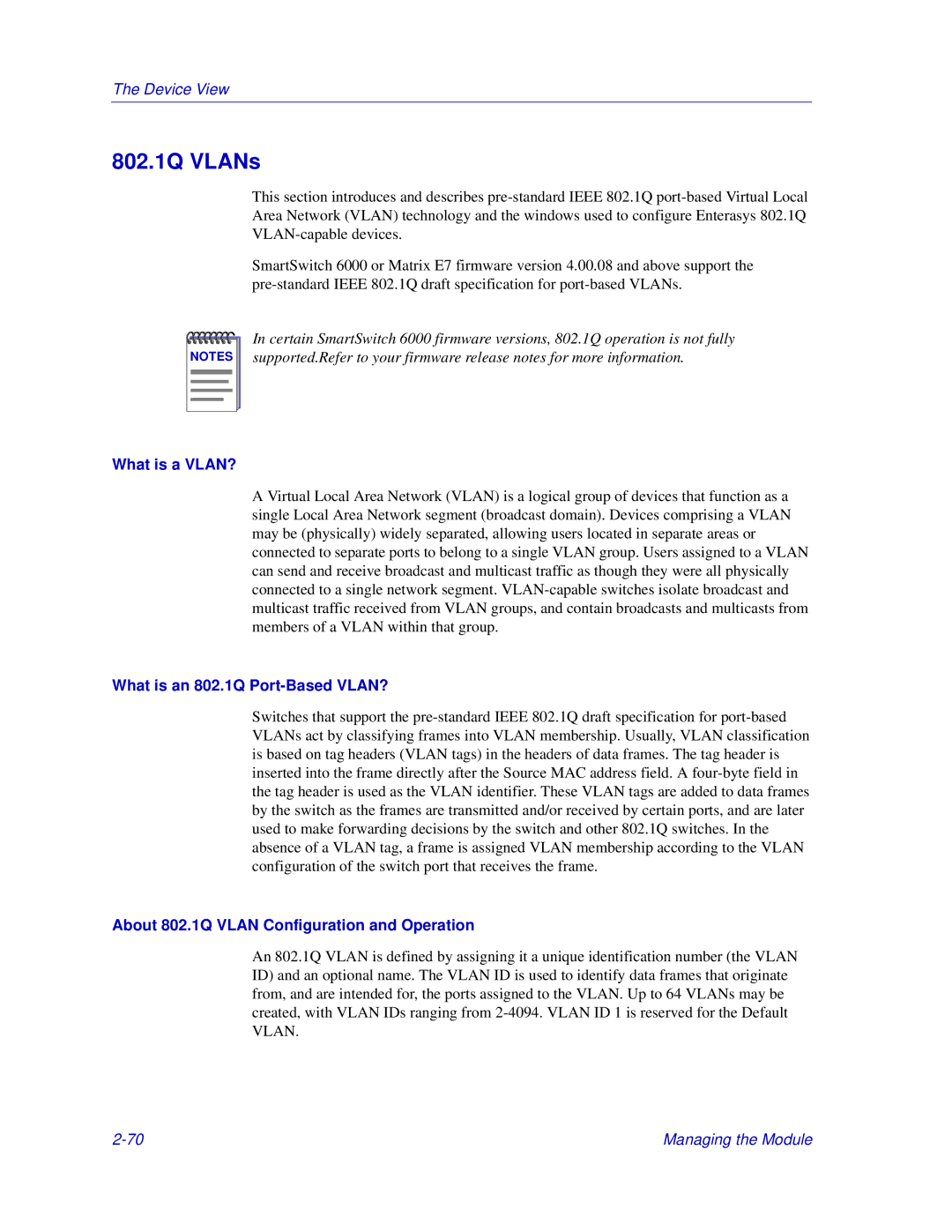
The Device View
802.1Q VLANs
This section introduces and describes
SmartSwitch 6000 or Matrix E7 firmware version 4.00.08 and above support the
NOTES |
In certain SmartSwitch 6000 firmware versions, 802.1Q operation is not fully supported.Refer to your firmware release notes for more information.
What is a VLAN?
A Virtual Local Area Network (VLAN) is a logical group of devices that function as a single Local Area Network segment (broadcast domain). Devices comprising a VLAN may be (physically) widely separated, allowing users located in separate areas or connected to separate ports to belong to a single VLAN group. Users assigned to a VLAN can send and receive broadcast and multicast traffic as though they were all physically connected to a single network segment.
What is an 802.1Q Port-Based VLAN?
Switches that support the
About 802.1Q VLAN Configuration and Operation
An 802.1Q VLAN is defined by assigning it a unique identification number (the VLAN ID) and an optional name. The VLAN ID is used to identify data frames that originate from, and are intended for, the ports assigned to the VLAN. Up to 64 VLANs may be created, with VLAN IDs ranging from
Managing the Module |
